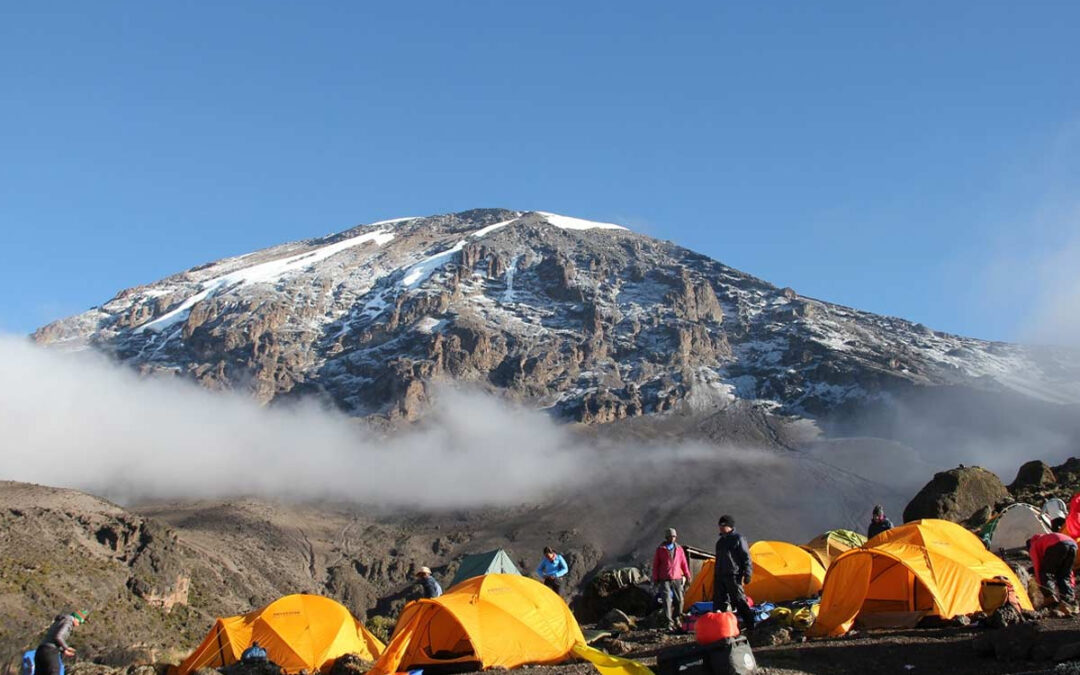Mount Kilimanjaro, Africa’s highest peak, is a bucket-list adventure for many. As the tallest free-standing mountain in the world, it offers breathtaking views and a significant physical challenge. But even if you’re a beginner, climbing Kilimanjaro is achievable with the right preparation. This step-by-step guide will walk you through everything you need to know for a successful summit.
Step 1: Choose the Best Route for Climbing Mount Kilimanjaro
Choosing the right route is crucial, especially for beginners. Each route varies in terms of difficulty, scenery, and acclimatization time. Here’s a breakdown of the most popular routes for first-timers:
| Route | Difficulty | Duration | Accommodation | Success Rate | Highlights |
|---|---|---|---|---|---|
| Marangu | Moderate | 5-6 days | Huts | 50% | Shortest, with hut accommodations |
| Machame | Moderate to Hard | 6-7 days | Camping | 85% | Scenic route, gradual ascent |
| Lemosho | Moderate to Hard | 7-9 days | Camping | 90% | Beautiful landscapes, fewer crowds |
Step 2: Physical and Mental Preparation for Kilimanjaro Climb
While Mount Kilimanjaro does not require technical climbing skills, it demands good physical fitness and mental stamina. Here’s how you can prepare:
- Cardio Training: Engage in activities like running, cycling, or swimming to boost endurance.
- Strength Training: Focus on leg and core strength with exercises like squats, lunges, and core workouts.
- Mental Preparation: The trek can be exhausting. Stay positive, visualize success, and remember the incredible reward of reaching the summit.
Step 3: Essential Gear for Your Kilimanjaro Climb
Packing the right gear is essential for a safe and comfortable trek. Since Kilimanjaro’s climate ranges from tropical at the base to freezing at the summit, you’ll need to pack a variety of items:
| Essential Gear | Purpose |
|---|---|
| Layered Clothing | For adapting to changing temperatures, from hot to freezing cold. |
| Hiking Boots | Waterproof and well-broken in to avoid blisters and discomfort. |
| Trekking Poles | Helps with balance and reduces strain on knees. |
| Waterproof Jacket | Protects against rain and cold wind, especially near the summit. |
| Sunglasses and Hat | Sun protection is crucial at higher altitudes. |
Having the right gear can make all the difference in your Kilimanjaro trekking experience.
Step 4: Acclimatization Tips for Kilimanjaro
Altitude sickness is one of the most significant challenges in climbing Kilimanjaro. To combat this, proper acclimatization is key:
- Go Slowly: Adopt the local phrase, “Pole Pole”, meaning “slowly, slowly.” Rushing increases the risk of altitude sickness.
- Hydrate Frequently: Drink at least 3-4 liters of water each day to stay hydrated and aid acclimatization.
- Choose Longer Routes: Routes like Lemosho and Machame offer more days for acclimatization, reducing the likelihood of altitude sickness.
| Altitude Sickness Symptoms | How to Combat It |
|---|---|
| Headache, Nausea | Drink plenty of water and rest |
| Dizziness, Fatigue | Take short, slow steps, and eat light |
| Shortness of breath | Use acclimatization days on longer routes |
Step 5: What to Expect on Summit Day of Kilimanjaro Climb
Summit day is the most challenging yet rewarding part of your Kilimanjaro climb. Here’s what to expect:
- Early Start: The summit attempt usually starts at midnight to allow climbers to reach the peak by sunrise.
- Cold Temperatures: Temperatures can drop to -20°C (-4°F) on the summit, so dress warmly in layers.
- Steep Climb: The final push to Uhuru Peak is a steep ascent over loose scree. Stay focused and take small, steady steps.
Step 6: The Descent
After celebrating your summit at Uhuru Peak, it’s time to descend. The descent is faster but can be tough on your knees. Here are a few tips:
- Use Trekking Poles: They help stabilize your balance and take pressure off your knees.
- Go Slow: Even though the descent is quicker, take your time to avoid injury.
| Descent Details | Advice |
|---|---|
| Fast-paced descent | Take it easy, use trekking poles to reduce impact on knees. |
| Slippery paths (especially scree) | Watch your footing and avoid rushing on loose gravel. |
Step 7: Celebrate Your Kilimanjaro Success
Reaching the summit of Mount Kilimanjaro is an extraordinary achievement! Many climbers choose to celebrate their success by relaxing in Zanzibar or exploring Tanzania’s other attractions. Treat yourself to some well-deserved rest after an incredible adventure.
FAQs for Climbing Kilimanjaro
- What is the easiest route to climb Kilimanjaro for beginners?
- The Marangu Route is considered the easiest due to its gradual ascent and hut accommodations. However, routes like Machame offer better acclimatization and a higher summit success rate.
- How fit do I need to be to climb Kilimanjaro?
- You should have a good level of fitness, focusing on cardio and endurance exercises. Kilimanjaro is challenging, but with proper preparation, it’s achievable for most people.
- When is the best time to climb Mount Kilimanjaro?
- The best times to climb Kilimanjaro are during the dry seasons, from January to early March and from June to October, when weather conditions are more favorable.
- Can beginners reach the summit of Kilimanjaro?
- Yes! With proper preparation, choosing the right route, and pacing yourself, even beginners can reach the summit of Kilimanjaro.
- What should I pack for a Kilimanjaro trek?
- Essential items include layered clothing, waterproof boots, trekking poles, and plenty of water. Check your tour operator’s recommended packing list for a complete guide.


